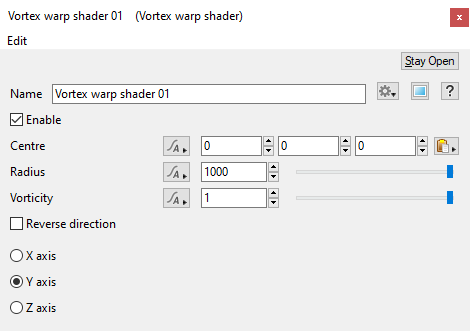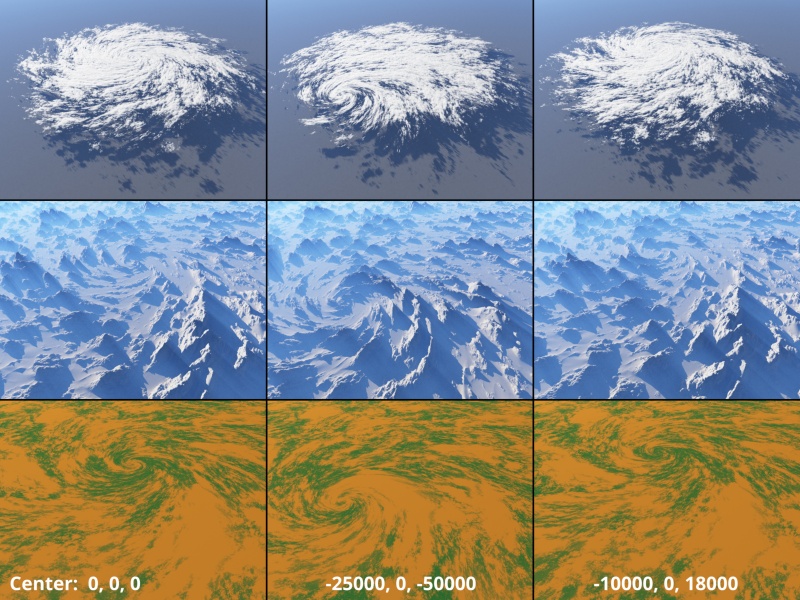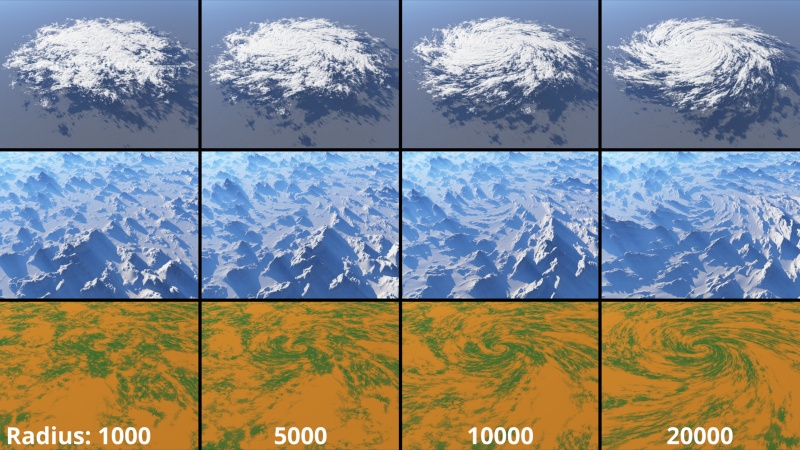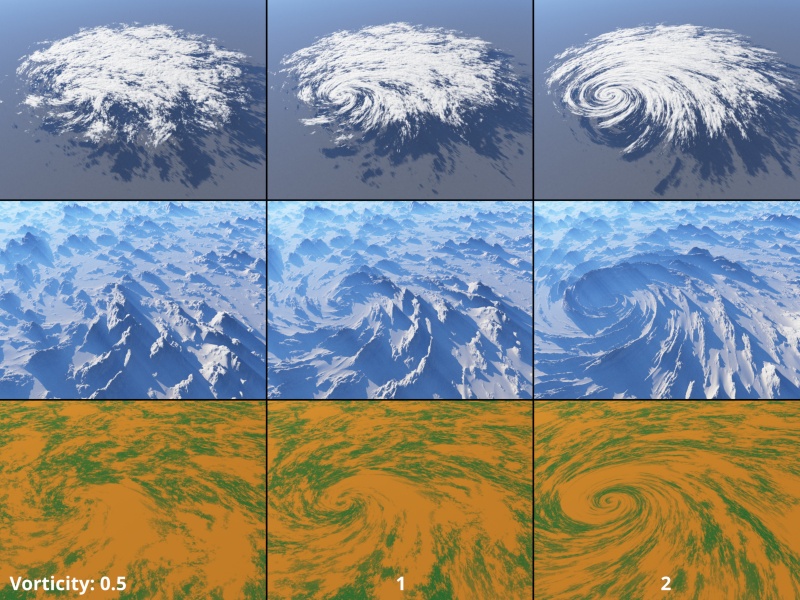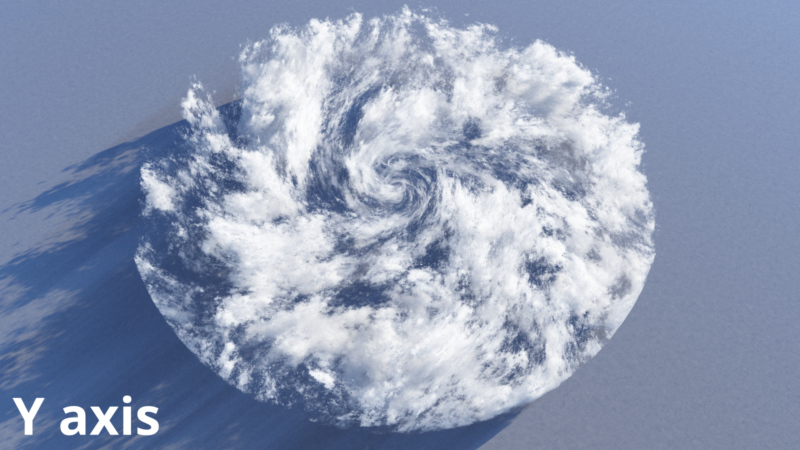Vortex Warp Shader
Overview[edit]
The Vortex Warp shader uses a built-in vortex function to warp (distort) the texture coordinates used by the shaders attached to its Main Input. For example, this shader can be used to warp clouds, terrains and colour shaders.
Settings:
- Name: This setting allows you to apply a descriptive name to the node, which can be helpful when using multiple Vortex Warp shader nodes in a project.
- Enable: When checked, the node is active and the Vortex Warp shader will be applied to the surface or cloud layers. When unchecked, the node is ignored.
- Centre: This setting positions the centre of the vortex effect. These world space coordinates are in metres.
- Radius: This setting controls the size of the area that is affected by the vortex effect the greatest. Higher values expand the vortex effect into surrounding areas. Smaller values centralize the vortex effect around the Centre coordinates.
- Vorticity: This setting controls the intensity of the vortex effect. Higher values draw the features closer towards the center of the vortex effect.
- Reverse direction: When checked, the vortex effect is reversed, that is, it changes from spinning in a counter-clockwise direction to clockwise.
- X axis: When checked the built-in vortex function is projected along the X axis.
- Y axis: When checked, the built-in vortex function is projected along the Y axis. This is the default behaviour.
- Z axis: When checked, the built-in vortex function is projected along the Z axis.
A shader is a program or set of instructions used in 3D computer graphics to determine the final surface properties of an object or image. This can include arbitrarily complex descriptions of light absorption and diffusion, texture mapping, reflection and refraction, shadowing, surface displacement and post-processing effects. In Terragen 2 shaders are used to construct and modify almost every element of a scene.
A single object or device in the node network which generates or modifies data and may accept input data or create output data or both, depending on its function. Nodes usually have their own settings which control the data they create or how they modify data passing through them. Nodes are connected together in a network to perform work in a network-based user interface. In Terragen 2 nodes are connected together to describe a scene.
